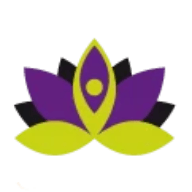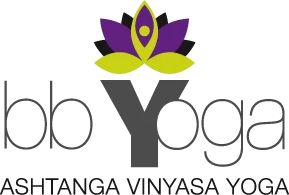The importance of Tristhana in Ashtanga Vinyasa Yoga.

Ashtanga Vinyasa Yoga starts from the movement of the body, in which the synchronization with the breath is the central point, and aims helping us to calm and to focus our spirit, as all other physical types of Yoga.
Here the breath launches the movement then the movement and the breath melt together.
The final goal of the movement of the body in the Yoga it is not of a “spectacular” posture, but is to learn to calm our spirit and to refocus us.
Moreover, we think of the yoga only as the movements which we make on a carpet, but I think that it worth to remember (even though is not done in a very deep way) that “Asana” (the physical postures which we perform), represent only an eighth one of the yoga system (an eighth so of the “ways” which we have to center us and calm us), as says Patanjali, who left us one of the the most sacred texts on the philosophy of Yoga (“Yoga Sutra”).
These 8 instruments which allow the union of the body, the spirit and the soul and which are all connected ones with the others are:
YAMA ethical Disciplines of behavior towards the others (there are 5);
NYAMA ethical Disciplines of behavior towards us same (there are 5);
ASANA Postures;
PRANAYAMA Exercises done for controlling the breath;
PRATYARA withdraw of the senses inward;
DHARANA concentration;
DHYANA meditation;
SAMADHI contemplation.
For the Guru and the founder of the Ashtanga, S.K.Pattabhi Jois, by practising Asana following the system of Ashtanga with worship and constancy, we can achieve with patience, every 8 branches of the Yoga, because they are naturally going to arrive, in the evolution of the physical practice.
Moreover, already Latin said “Mens sana in corpore sano” (a healthy brain lives in a healthy body), thus by controlling our body and our breath we can become more aware of the unconscious and control our thoughts also.
What is then the practice of Ashtanga based on to bring us towards easing?
On Tristhana.
“Tri” in Sanskrit means three and “Sthana” means the place where the action is.
These 3 places of the action always have to be practiced together and they are:
- The breath.
We have to breath only through the nose; the inspiration must be equal to the expiration and kept constant and stable throughout the practice.
The breath has to flow without interruptions and with a sound produced at the base of the throat.
To the breath we have then to add Bandhas, energy internal locks which, once activated, have the effect of freeing the energy and of channelling her.
Combined to the breath, Bandhas allow to increase the prana (vital energy). They give to the practice stability and lightness, strength and flexibility.
Bandhas are three: Mula Bandha (in the root of the perineum), Uddiyana Bandha (at the level of navel) and Jalandhara Bandha (in the troath).
2 The postures
Asana (postures) are linked in a methodical way with a correct alignment and under the guide of a teacher
who follows the “parampara” (following the tradition from the master to the disciple); every asana is connect to the other one and the order must be followed.
3 The gazing point
“Drsti” (the gazing point) is the direction where we have to focus our look in every asana.
It increases the concentration, it turns our look inward and bring a sense of unity during the practice, to enable us to be there more present.
It is also very beneficial fro our everyday life.
There is nine Drsti:
Urdhva – at the top;
Brumadhya – towards the third eye, the middle point between our eyebrows;
Nasagra – towards the point of the nose;
Parsva – towards the right;
Parsva – towards the left;
Nabhi – towards the navel;
Hastagra – towards the end of our major finger;
Angusta – towards the end of our thumb;
Padagra – towards the point of the big toe.
When these three elements breath, bandhas and dristi are melted together, fluidity and grace spread from the practice. They have a meditative effect on the practitioner.
Tristhana is obtained by the perseverance; it is the repetition which allows us to acquire the necessary ease that gives the transitions and the postures subtlety, stability and energy.
The post The importance of Tristhana in Ashtanga Vinyasa Yoga. appeared first on BBYoga.

Beatrice Bassi
Yoga et
rééducation posturale
Saint Tropez - France
Email:
info@bbyoga.fr
Tel.
+33 624 794098
Menu
Tous droits réservés | bbYoga. N. SIREN 820942621




